Last Updated on: February 4, 2025
A state known for its diverse landscapes, Colorado is surrounded by mountains, deserts, canyons, plains, rivers, and dunes. With its unique topography and rich vegetation, Colorado is home to many birds of prey.
Among others, owls are some of the most abundant in The Centennial State. From something as small as northern pygmy owls to as big as great horned owls, you will find a large selection of raptors.
Read on and learn more about the owls in Colorado. We’ll walk you through some of the most common species you will find in the state, including their defining characteristics.
The Most Common Colorado Owls
1. Great Horned Owl
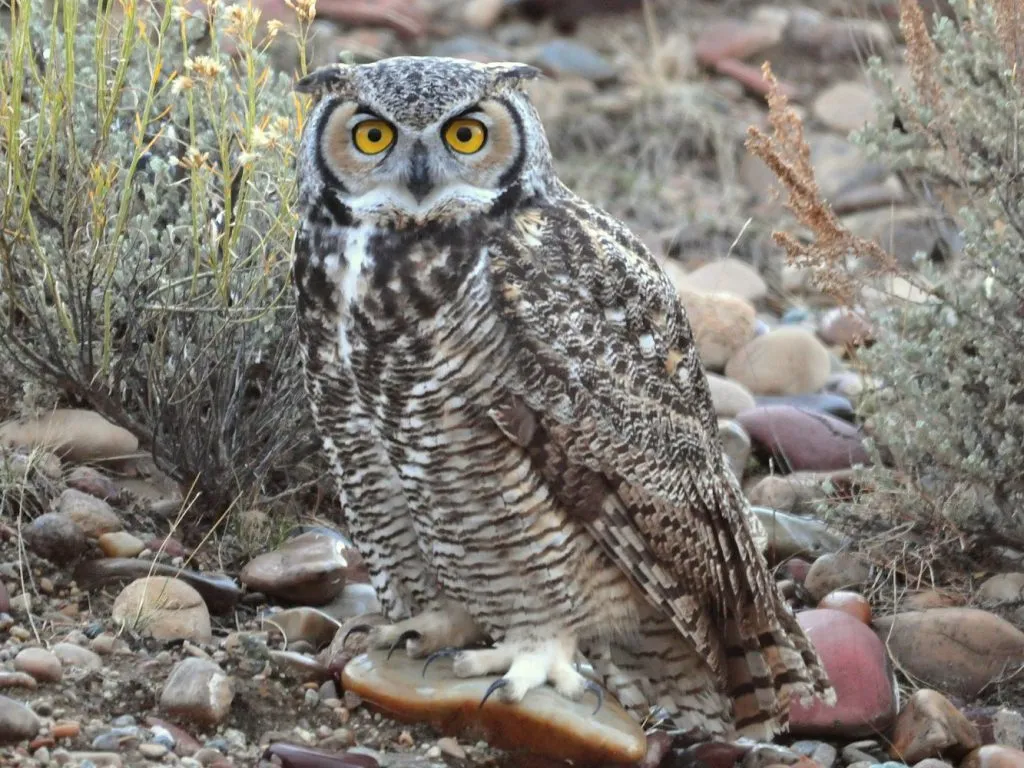
It is impossible to have a list of the owls of Colorado without mentioning great horned owls. They are the largest in the state and the country. Not to mention, they are also amongst the most common.
On average, a great horned owl Colorado has a length of 17 to 25 inches, a weight of up to four pounds, and a wingspan of up to 26 inches.
Aside from its size, another easy way to identify great horned owls is through their appearance. They have yellow eyes and recognizable long tufts that look like ears.
Being as big as a duck, these owls are ferocious hunters and big eaters. As a powerful predator, it can take down even large prey. Its diet includes mammals, including rats, rabbits, and squirrels. Great horned owls will also eat other birds, as well as lizards, frogs, and scorpions.
Its presence has been documented in almost all state parks in Colorado. If you are looking for these owls in Denver or any other area, head to grasslands, wetlands, and even backyards. They are most active from dusk until dawn.
2. Eastern Screech Owl
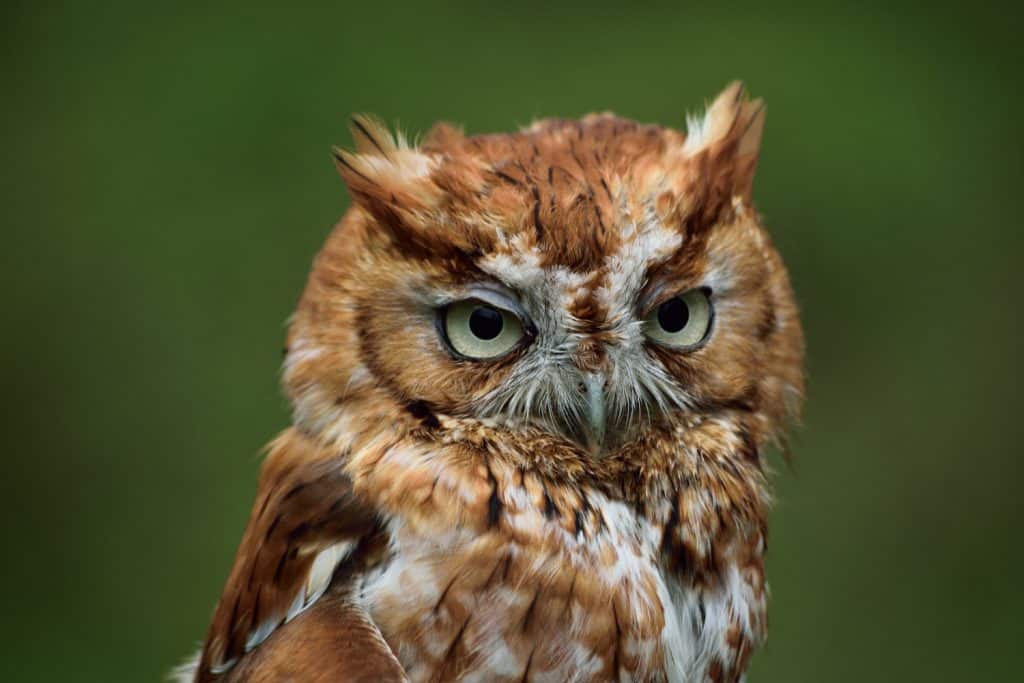
A permanent resident in the eastern part of Colorado, specifically near the border, eastern screech owls are easy to recognize with their small and stocky bodies without a neck.
Males will mate with multiple females throughout the breeding season but will finally pair with an individual to raise chicks. The pairs will change annually.
Thick forests form most of the natural habitats of an eastern screech owl. Nonetheless, they are adaptable, even to human invasion. You can also see them in parks, buildings, and backyards. They will nest even in busy locations, such as streetlamps and highways.
If you are looking for an eastern screech owl in the state, you will find most of them in woodlands. They tend to avoid areas packed with larger owls.
3. Western Screech Owl
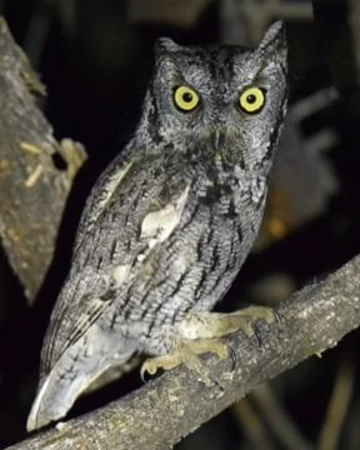
At one point, western screech owls and eastern screech owls were thought to have been the same bird species, but further research proved that they are distinct.
Do not let the size of these small owls fool you. They might be tiny, but they are ferocious hunters that can easily take down larger prey. They can eat rabbits bigger than its body!
Spotting a western screech owl can be difficult. Not only that they are small, but they will also camouflage, making them challenging to find. If you want to see these birds, go to man-made forests, although they can also come to nest boxes.
Fun Fact: Despite its name, the western screech owl does not screech. Instead, it makes a pleasant but quiet toot-toot.
4. Barn Owl
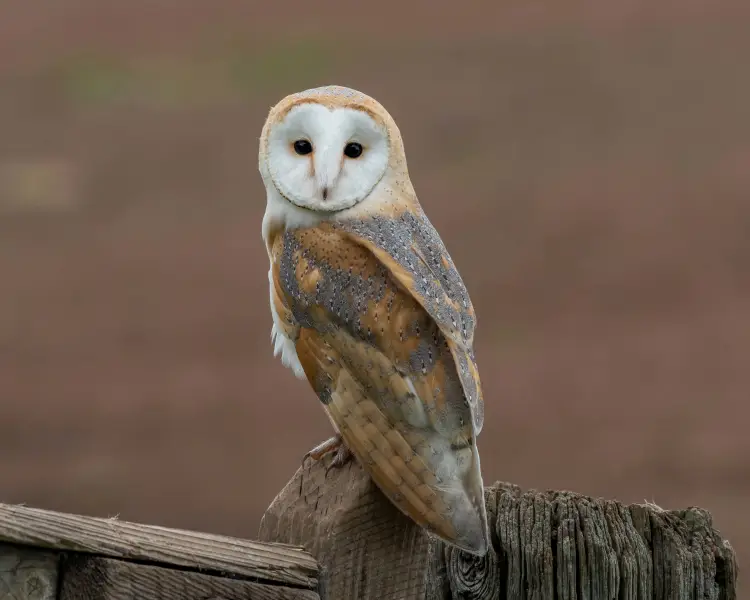
Barn owls are from the Tytonidae family. They are different from the other owls in The Centennial State, which are from the Strigidae family.
The defining physical characteristic of a barn owl is its heart-shaped face. It is rounder compared to most owls.
Another facial feature that makes barn owls recognizable is their bill. It is downward-facing, which almost resembles its nose.
Meanwhile, as to the size of its body, the average barn owl’s length ranges from 11 to 17 inches while it can expand its wings to 39 to 49 inches.
Barns are some of the most common nesting sites of these birds, which is where they got their name. Additionally, they can nest in other man-made structures, such as buildings and homes.
5. Burrowing Owl
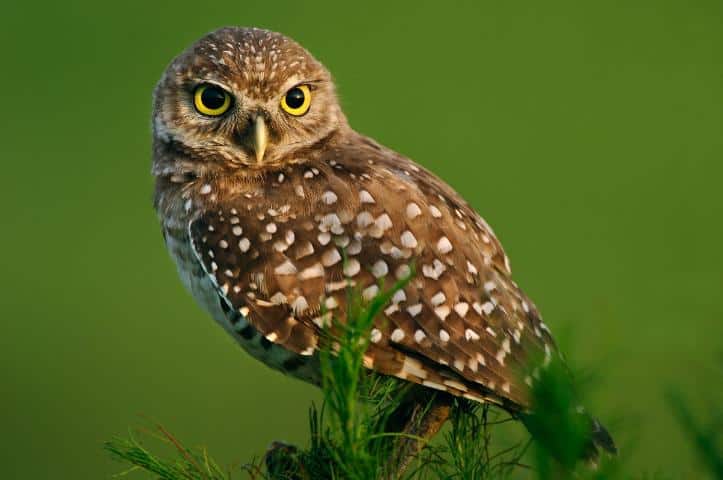
The burrowing owl’s length is anywhere from7.5 to 11 inches, making it one of the smallest owls on this list.
While most of the owls that live in Colorado spend their time in trees, a burrowing owl is different because it prefers staying on the ground. Burrowing owls will excavate its home or occupy shelters that have been made by large rodents. These shelters also double as the hiding spot for their food.
Burrowing owls are known for collecting waste from other animals and scattering them on the path that leads to their underground shelter. Insects will follow the path, and that is when the bird will attack its prey.
If you want to see this Colorado owl, it is best to spot them early in the morning or late in the afternoon, which is when they are most active.
6. Barred Owl
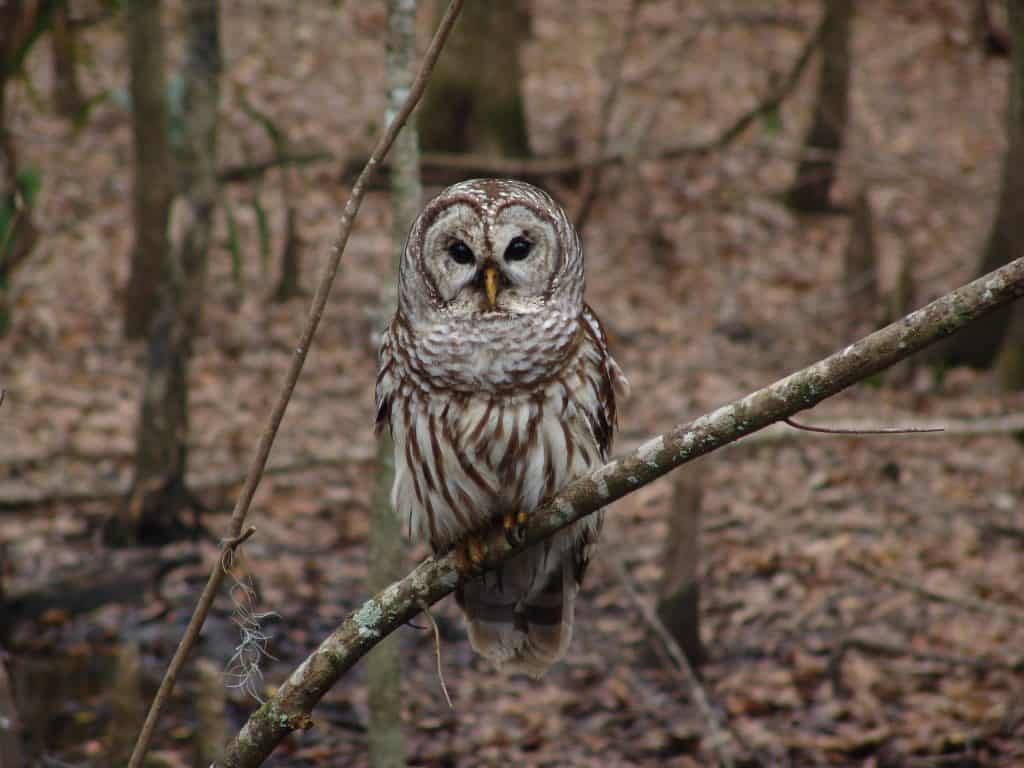
Almost the same size as a goose, barred owls are large and stocky. They have round heads with no ear tufts, making them easy to recognize if you are lucky enough to spot this bird in Colorado.
Only a bit shorter than the great horned owl length, the barred owl is not as aggressive. It watches its prey from a perch and will hunt either day or night. The diet consists mostly of small mammals, including rabbits, squirrels, and shrews.
You will find a barred owl residing in large and mature forests. Their nesting sites are in tree cavities.
7. Flammulated Owl
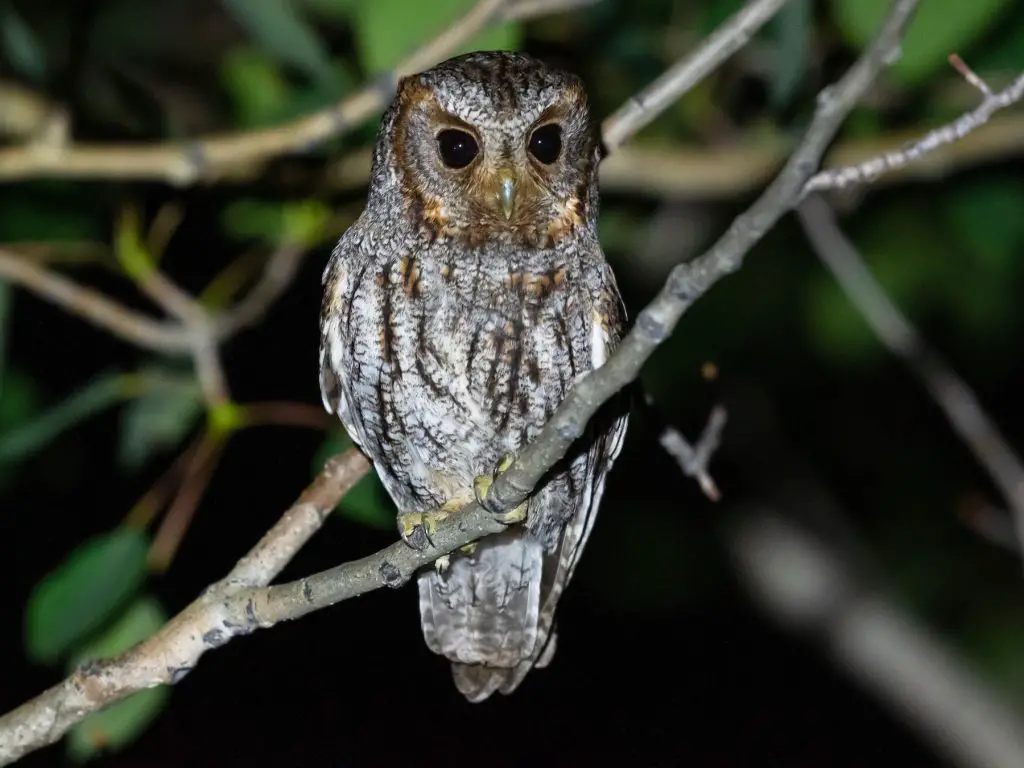
At only six to seven inches, these are the smallest owls in Chicago. In-flight, its wings will extend up to 16 inches. It is slightly smaller than a northern pygmy owl.
With brown and rust variegated patterns, it is easy for these birds to camouflage when they are in trees, especially in a pine trunk.
When foraging, flammulated owls will perch and look for insects then fly to catch their prey. It will eat crickets, beetles, and moths. Occasionally, it will also feed on spiders, scorpions, and centipedes.
The flammulated owl has a large trachea or windpipe, which is also what makes its hoot low-pitched similar to larger owls.
Because of the restricted range of flammulated owls, Colorado sightings are rare compared to the other owl species on this list.
8. Short-Eared Owl

For easy Colorado owl identification, the first thing to look at is the ear. As the name implies, a short eared owl has invisible ear tufts.
They also have a stocky body with brown feathers and white patches.
You will find short-eared owls in The Centennial State during the non-breeding season, so your best chance of seeing them is in the winter.
The best spot to see these birds is in North Colorado. They are year-round residents, especially in open country habitats with rich vegetation. A short eared owl can also be found in golf courses and city parks.
During the breeding season, short eared owls are monogamous. When they breed, they will roost on the ground, especially in places with tall grasses.
9. Long-Eared Owl
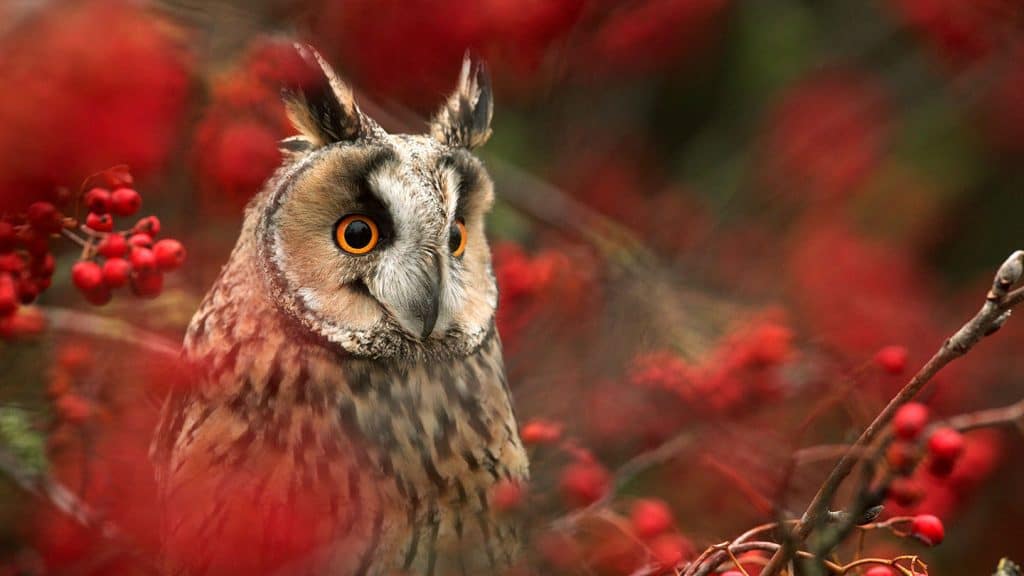
The distinct long ears of these Colorado owls will make their identification easy. The ear tufts look like exclamation points, which also makes the owl look like it is surprised. They also have large eyes and round faces.
Being secretive and with the habit of roosting in dense foliage that allows them to camouflage, spotting these owls can be a bit of a challenge.
Nonetheless, even if long eared owls often stay hidden in trees, they are sociable. They will live in groups. They are even known for sharing roosts.
Because they are difficult to see, you should use your ears. Males are loud, especially during the mating season. They will make a low hoot sound repeatedly up to 200 times. You can hear their call even when you are half a mile away.
10. Snowy Owl
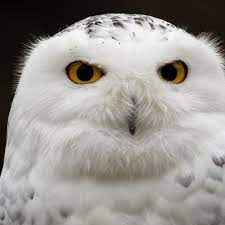
Rarer than most other owl species in this list, snowy owls are known for their distinct white plumage, which is also where it got its name.
They also have dark spots on their body, which are more prominent in females than males. As males get older, their white body turns paler.
With their loud Colorado owl sounds, it is easy to identify the presence of snowy owls through their hoot. You can hear their call even when the birds are seven miles away. While it is rare for females to hoot, they often shriek and hiss.
You can typically find them in the Arctic Tundra, Canada, and Alaska. Occasionally, there have been sightings of these owls in Colorado Springs, especially in the winter.
11. Northern Pygmy Owl
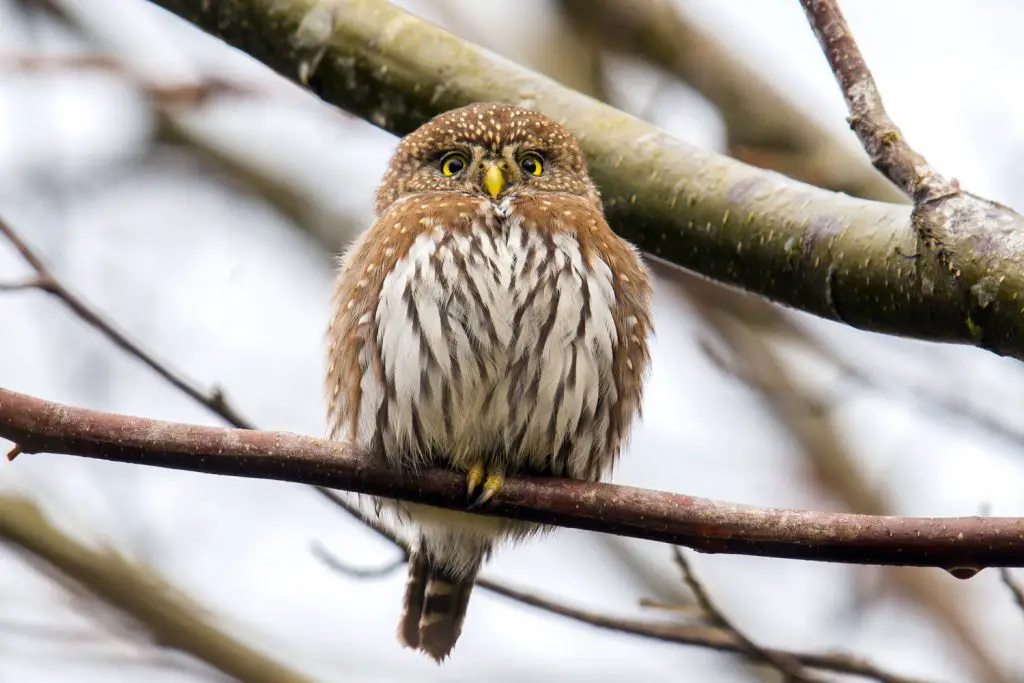
A northern pygmy owl may be tiny, but that does not mean that it is less capable compared to the larger types of owls in Colorado.
It is a ferocious bird that hunts mostly during the day. The owl will sit quietly and attack its prey.
Most owls will have flat facial discs and ears in asymmetrical positions, giving them an excellent hearing. However, such features are not present in northern pygmy owls. With this, they often rely on vision rather than hearing when hunting their prey.
These small birds have a marking at the back, which looks like an eye. It allows them to fool potential attackers.
When it is threatened, a northern pygmy owl will raise its tufts.
12. Northern Saw Whet Owl
These tiny owls are year-round residents in Colorado. If you have seen a small bird of prey in the state, chances are it is a northern saw whet owl.
While they are common in Colorado, their population is slowly declining. They prefer to hide in dense trees, and with the continued threat of deforestation, their population is being threatened.
The most common habitats of this Colorado owl are dense coniferous and hardwood forests, especially those that are next to rivers.
As a nocturnal Colorado owl, one of the best ways to spot this bird is not through its appearance but its sound. It has a shrill and penetrating call, which is often let out in successions.
13. Mexican Spotted Owl
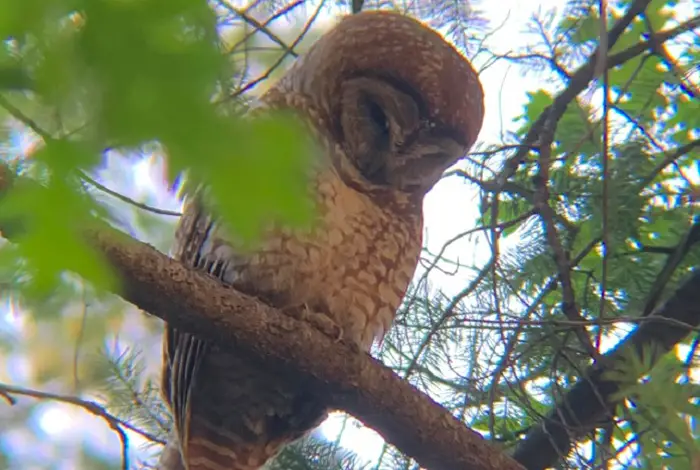
You will find several species of spotted owls in the state, and one of the most common is the Mexican spotted owl.
It is one of the largest owls in North America. The length of its body can reach 19 inches while its wingspan is up to 45 inches.
Aside from the wide geographic distribution, Mexican spotted owls are also known for having diverse habitats. Some of the best spots to find this Colorado owl are in mixed conifer forests and rocky canyons.
Identifying these birds is easy since they have a prominent facial disk. To add, they have white patterns on their back, breast, and tail.
As for its diet, a Mexican spotted owl will often eat small mammals, including flying squirrels and woodrats. They are intelligent, allowing them to hide the over-supply of their food and they can remember its location.
14. Boreal Owl
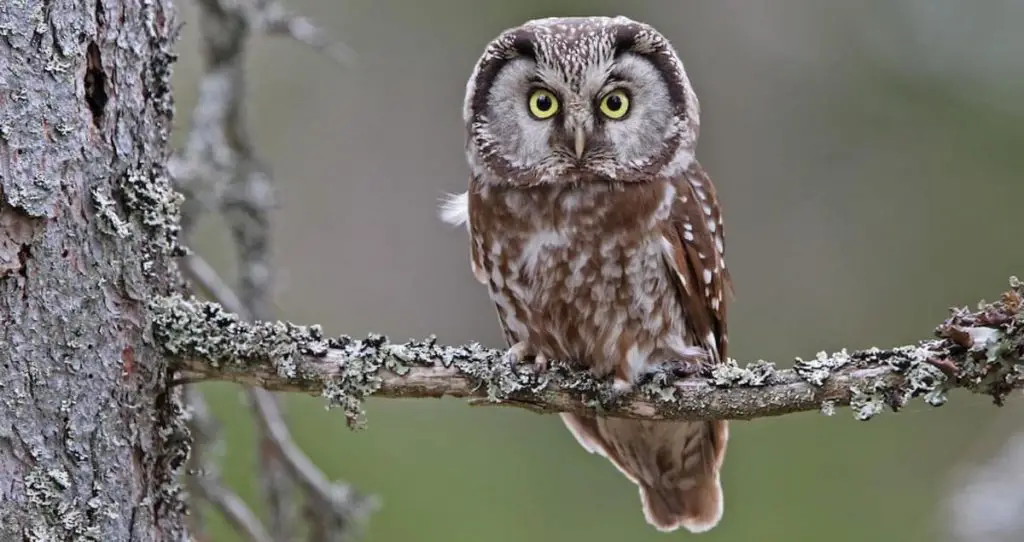
The boreal owl is found only in seven states in the U.S., and that includes Colorado.
Identifying these birds of prey can be confusing because they are available in a wide range of colors. Their bodies can be anywhere from gray to reddish-brown. Streaks and dots are evident throughout the body.
As they are named, you will find boreal owls in boreal forests. Specifically, they thrive in places with birch, fir, spruce, poplar, and aspen trees.
When they are on a tree, they will perch low with their head tilting back and forth. This is their way of scanning the area for potential prey. When they are ready to attack, the owl will swoop in.
Some of the primary foods of a boreal owl include bats, beetles, voles, baby squirrels, and other birds.
Watch This!
Frequently Asked Questions
What types of owls live in Colorado?
Colorado is home to many types of owls, including the following: great horned owl, eastern screech owl, western screech owl, barn owl, burrowing owl, barred owl, flammulated owl, short-eared owl, long-eared owl, snowy owl, northern pygmy owl, northern saw whet owl, Mexican spotted owl, and boreal owl.
What is the largest owl in Colorado?
The largest owl in Colorado is the great horned owl. It is also the most common amongst the Colorado owl species. The length ranges from 17 to 25 inches while its wings can extend up to five feet. Meanwhile, the weight is approximately 2.5 to 4 pounds.
How big do owls get in Colorado?
Owls in The Centennial State can get as big as 26 inches in terms of length and four pounds in terms of weight. Such is the case with the great horned owl, which is considered the largest owl in The Centennial State.
Are there barn owls in Colorado?
Yes, there are barn owls in The Centennial State. In the eastern part of the state, you will find these species of owls in grasslands and prairies. Meanwhile, in the western part, they are most common in scrublands and valleys.
Is it illegal to kill an owl in Colorado?
It is illegal to kill an owl in Colorado. They are protected by both state and federal laws. Many species are considered threatened and non-game, which means that they are protected against possession and harassment. One of the laws that protect owls, along with other raptors like hawks, eagles, and falcons, is the Migratory Bird Act.
Conclusion
From seasonal to migrant residents, you will find diverse Colorado owls. Big or small, in the forests or public parks, there is a long list of raptors that are present in The Centennial State. Whether you are online looking for pictures of owls in Colorado or on an actual bird-watching expedition, watch out for the species mentioned above.
Are there other owls native to Colorado that we missed? Let us know and leave a comment below.

